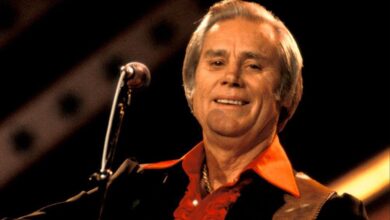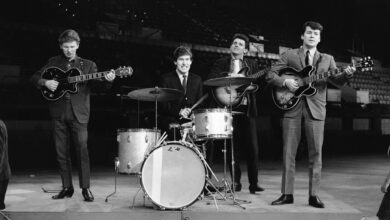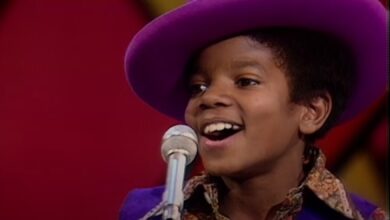Badfinger’s ‘Come and Get It’ Launches a New Era for British Rock-Pop in 1969
In late 1969, the British rock group Badfinger released “Come and Get It,” a crisp, punchy pop track that would not only mark their breakthrough but also signal the beginning of Apple Records’ attempt to shape post-Beatles pop music. Written and produced by Paul McCartney, the song became an instant hit, peaking at No. 7 in the UK and climbing to No. 7 on the US Billboard Hot 100 in early 1970. “Come and Get It” wasn’t just a hit single — it was a statement of confidence from a fledgling band with the endorsement of a Beatle, and it set the tone for the power-pop movement that followed.
Badfinger’s origins trace back to Swansea, Wales, where the band was originally formed under the name The Iveys in the early 1960s. Composed of Pete Ham, Tom Evans, Mike Gibbins, and Ron Griffiths, they earned modest local fame before catching the attention of The Beatles’ newly-formed Apple label. Renamed Badfinger — a cheeky nod to the Beatles’ working title for “With a Little Help from My Friends,” originally called “Bad Finger Boogie” — the group had a clean sound, sharp harmonies, and a flair for melody that made them a natural fit for McCartney’s aesthetic. Their knack for tight, energetic arrangements set them apart in an era where psychedelia was fading and polished songwriting was returning to the spotlight.
The story behind “Come and Get It” is as serendipitous as it is legendary. Paul McCartney wrote and recorded a demo of the song in just under an hour on July 24, 1969, laying down vocals, piano, drums, and bass himself. It was intended for the soundtrack to the film The Magic Christian, starring Peter Sellers and Ringo Starr. Rather than perform the song himself, McCartney saw it as an opportunity to develop one of Apple’s newest signees. He told Badfinger they could record it — on the sole condition that they follow his demo “note for note.” Pete Ham would later recall McCartney’s clarity and decisiveness during the session, a moment that marked the first big break in their young career.
The recording was overseen by McCartney at EMI Studios (now Abbey Road), with his presence lending not just guidance, but star power. Pete Ham provided lead vocals, with Griffiths, Evans, and Gibbins contributing the tight rhythm section and backing vocals. McCartney’s original arrangement, inspired by a Tin Pan Alley songwriting sensibility with Beatles-esque production polish, was adhered to strictly. The final result was a song that sounded instantly familiar yet refreshingly new — a compact, hook-laden pop gem clocking in at just 2 minutes and 26 seconds.
“Come and Get It” was released as a single in December 1969 in the UK and early 1970 in the US. It quickly shot up the charts, buoyed by Apple Records’ promotional muscle and McCartney’s endorsement. It became Badfinger’s first major hit and helped introduce them to a global audience. The track was also featured in The Magic Christian, where it was used over the film’s opening credits, giving it further visibility. The single sold over a million copies and earned Badfinger gold record status — a milestone that few Apple Records artists outside of The Beatles would ever achieve.
Culturally, the song represented an important transitional moment in British rock. As the Beatles approached their dissolution in 1970, there was widespread speculation about who would carry the torch for the kind of melodic, finely crafted pop-rock they had defined. Badfinger’s emergence — and their connection to McCartney — made them natural heirs to that legacy. “Come and Get It” was fresh, upbeat, and structured with the same airtight musical logic that had made Beatles hits irresistible. Its success reassured listeners and industry figures alike that post-Beatles British pop still had compelling voices to offer.
For Badfinger, “Come and Get It” opened the doors to a flurry of opportunities. It led to the release of their first album under the new name, Magic Christian Music, in 1970. They were soon tapped for extensive tours across the UK, Europe, and the United States. More importantly, the hit allowed them to work more confidently as songwriters and performers, particularly Pete Ham and Tom Evans, who would go on to pen some of the band’s biggest later successes, including “No Matter What” and the immortal “Without You.”
Beyond its commercial implications, “Come and Get It” played a crucial role in establishing the template for power pop — a subgenre defined by strong melodies, harmonized vocals, and crunchy guitar riffs. Bands like Big Star, The Raspberries, and even Cheap Trick would later follow in Badfinger’s footsteps. The track’s blend of British Invasion sensibility with a forward-looking musical aesthetic placed it firmly in the lineage that would inspire pop-rock throughout the ’70s and beyond.
Over the years, “Come and Get It” has been covered by various artists, including Paul McCartney himself during his live sets. A notable rendition was performed by Elton John in 1997 during a BBC tribute to McCartney, reflecting the respect it commanded among McCartney’s musical peers. The song’s simplicity and memorable chorus have made it a staple of classic rock playlists and a popular choice for retro film soundtracks.
The period following the release of “Come and Get It” marked a bittersweet chapter for Badfinger. While the song launched them into stardom, internal pressures and poor management would eventually lead to tragic consequences. Pete Ham and Tom Evans, both central figures in the band’s creative force, took their own lives in the years that followed. Yet in 1969, with this single, they stood on the threshold of greatness — buoyed by optimism and McCartney’s belief in their talent.
In terms of its long-term legacy, “Come and Get It” continues to enjoy significant airplay and is widely recognized as one of the most successful non-Beatles productions by McCartney. It is featured on countless Apple Records compilations and retrospectives of early 1970s British pop. Its placement in The Magic Christian also keeps it alive in cinematic memory. More importantly, the song introduced the world to a band whose influence would quietly ripple through rock history for decades.
Musically, the song’s success demonstrated the viability of carefully crafted pop-rock during a time when heavier psychedelic sounds were beginning to dominate. Its clear structure, accessible lyrics, and singable melody laid groundwork for a stylistic shift toward a more radio-friendly sound that would define the early 1970s. It was proof that a well-written, tightly produced track could still conquer the charts — no gimmicks necessary.
In the years since, “Come and Get It” has come to symbolize both promise and poignancy. It marked the beginning of Badfinger’s meteoric rise and, in hindsight, the beginning of a turbulent story. But in that initial moment — with a song written by a Beatle and performed by a hungry new band — everything seemed possible. The track remains a gleaming artifact of a very specific time in music history: a bridge between the Beatles’ final chord and the next era’s first note.
Even today, the song stands as one of the most memorable introductions a band could hope for. Its confidence, its catchiness, and its connection to Paul McCartney all contribute to its enduring power. “Come and Get It” wasn’t just an invitation to listeners — it was a challenge to the industry. A call to recognize the power of melody, of clarity, and of unadorned songwriting. And more than fifty years later, that call still resonates.



